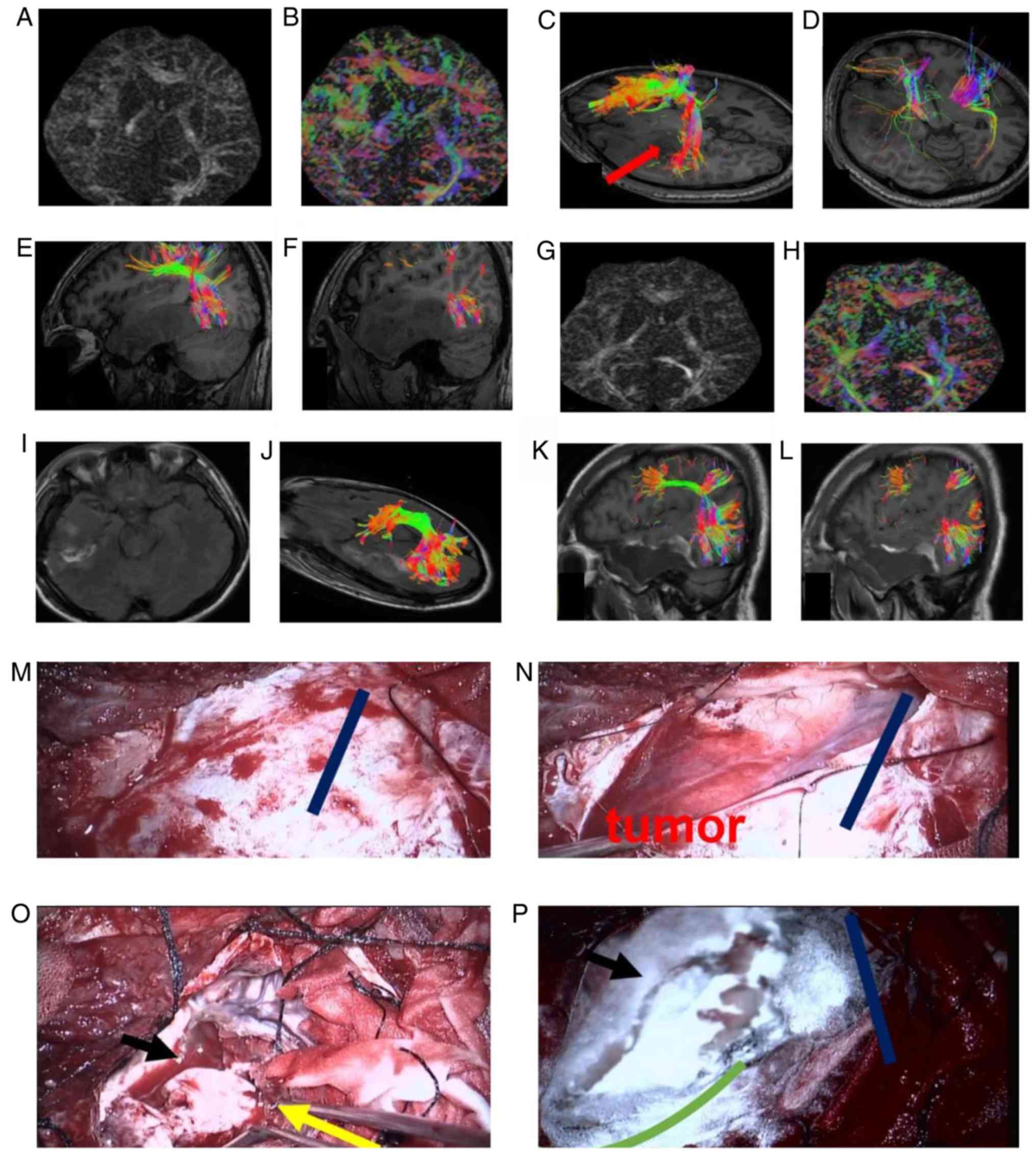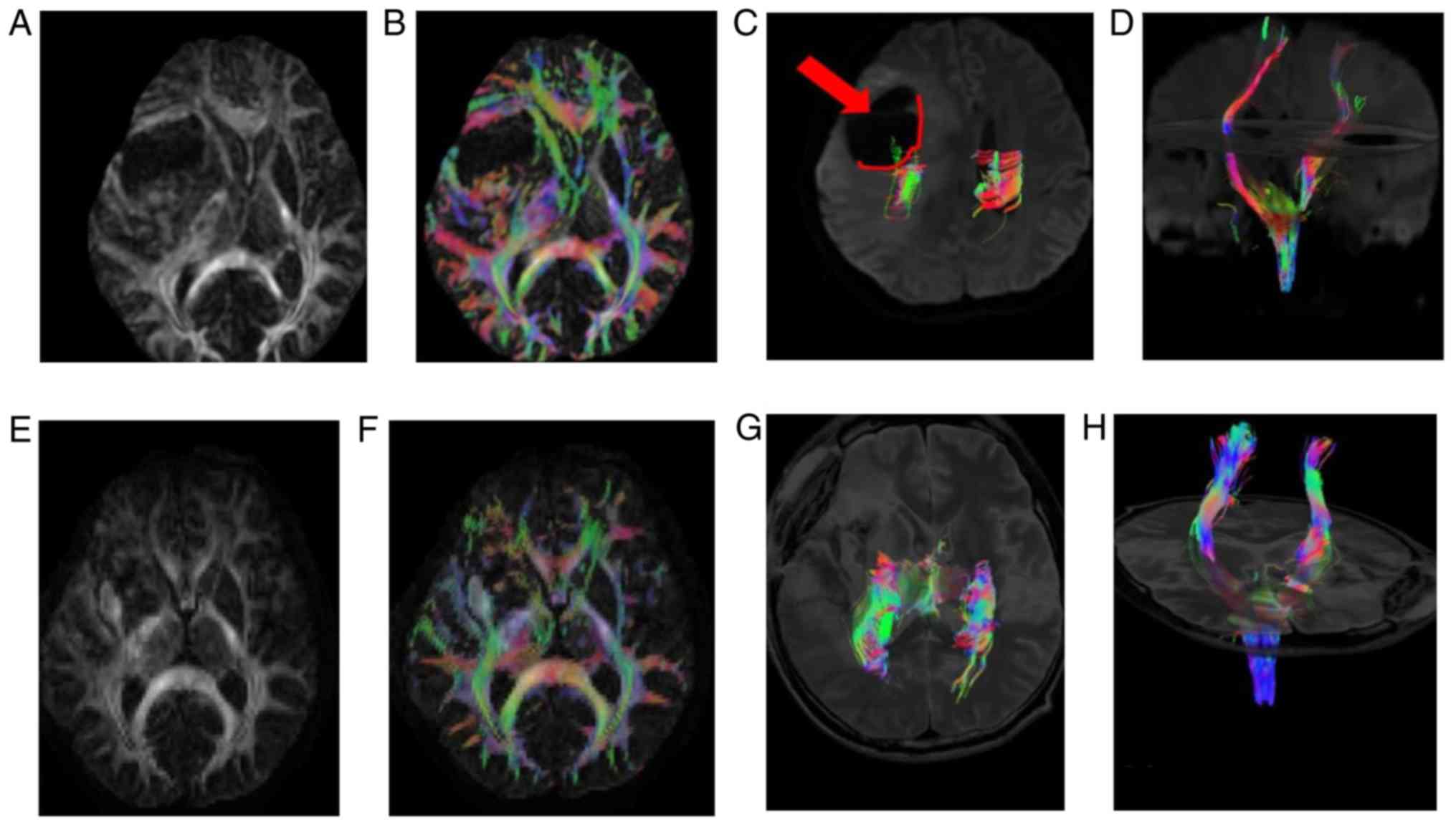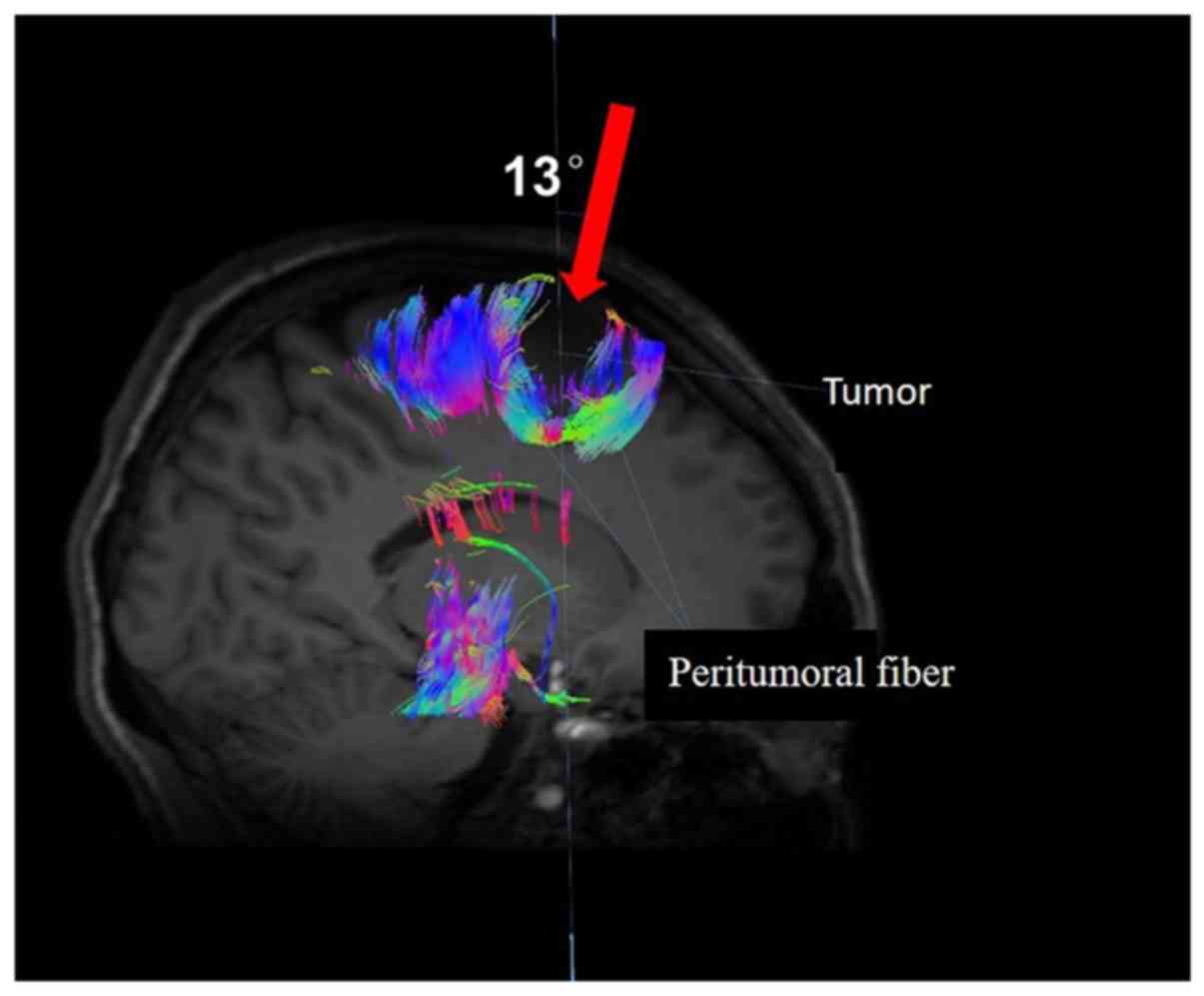|
1
|
Tian W, Zhang J, Tian F, Shen J, Niu T, He
G and Yu H: Correlation of diffusion tensor imaging parameters and
Gleason scores of prostate cancer. Exp Ther Med. 15:351–356.
2018.PubMed/NCBI
|
|
2
|
Castellano A, Bello L, Michelozzi C,
Gallucci M, Fava E, Iadanza A, Riva M, Casaceli G and Falini A:
Role of diffusion tensor magnetic resonance tractography in
predicting the extent of resection in glioma surgery. Neuro Oncol.
14:192–202. 2012. View Article : Google Scholar : PubMed/NCBI
|
|
3
|
Stadlbauer A, Nimsky C, Buslei R,
Salomonowitz E, Hammen T, Buchfelder M, Moser E, Ernst-Stecken A
and Ganslandt O: Diffusion tensor imaging and optimized fiber
tracking in glioma patients: Histopathologic evaluation of
tumor-invaded white matter structures. Neuroimage. 34:949–956.
2007. View Article : Google Scholar : PubMed/NCBI
|
|
4
|
Lee JS, Han MK, Kim SH, Kwon OK and Kim
JH: Fiber tracking by diffusion tensor imaging in corticospinal
tract stroke: Topographical correlation with clinical symptoms.
Neuroimage. 26:771–776. 2005. View Article : Google Scholar : PubMed/NCBI
|
|
5
|
Musiek FE and Weihing J: Perspectives on
dichotic listening and the corpus callosum. Brain Cogn. 76:225–232.
2011. View Article : Google Scholar : PubMed/NCBI
|
|
6
|
Seok JH, Park HJ, Chun JW, Lee SK, Cho HS,
Kwon JS and Kim JJ: White matter abnormalities associated with
auditory hallucinations in schizophrenia: A combined study of
voxel-based analyses of diffusion tensor imaging and structural
magnetic resonance imaging. Psychiatry Res. 156:93–104. 2007.
View Article : Google Scholar : PubMed/NCBI
|
|
7
|
Ye AQ, Hubbard Cristinacce PL, Zhou FL,
Yin Z, Parker GJ and Magin RL: Diffusion tensor MRI phantom
exhibits anomalous diffusion. Conf Proc IEEE Eng Med Biol Soc.
2014:746–749. 2014.PubMed/NCBI
|
|
8
|
Liu B, Zhu T and Zhong J: Comparison of
quality control software tools for diffusion tensor imaging. Magn
Reson Imaging. 33:276–285. 2015. View Article : Google Scholar : PubMed/NCBI
|
|
9
|
Savardekar AR, Patra DP, Thakur JD,
Narayan V, Mohammed N, Bollam P and Nanda A: Preoperative diffusion
tensor imaging-fiber tracking for facial nerve identification in
vestibular schwannoma: A systematic review on its evolution and
current status with a pooled data analysis of surgical concordance
rates. Neurosurg Focus. 44:E52018. View Article : Google Scholar : PubMed/NCBI
|
|
10
|
Rades D, Bolm L, Kaesmann L and Bartscht
T: Karnofsky performance score is predictive of survival after
palliative irradiation of metastatic bile duct cancer. Anticancer
Res. 37:949–951. 2017.PubMed/NCBI
|
|
11
|
Louis DN, Ohgaki H, Wiestler OD, Cavenee
WK, Burger PC, Jouvet A, Scheithauer BW and Kleihues P: The 2007
WHO classification of tumours of the central nervous system. Acta
Neuropathol. 114:97–109. 2007. View Article : Google Scholar : PubMed/NCBI
|
|
12
|
Hattori N, Hirose Y, Sasaki H, Nakae S,
Hayashi S, Ohba S, Adachi K, Hayashi T, Nishiyama Y, Hasegawa M and
Abe M: World Health Organization grade II–III astrocytomas consist
of genetically distinct tumor lineages. Cancer Sci. 107:1159–1164.
2016. View Article : Google Scholar : PubMed/NCBI
|
|
13
|
Ouyang A, Jeon T, Sunkin SM, Pletikos M,
Sedmak G, Sestan N, Lein ES and Huang H: Spatial mapping of
structural and connectional imaging data for the developing human
brain with diffusion tensor imaging. Methods. 73:27–37. 2015.
View Article : Google Scholar : PubMed/NCBI
|
|
14
|
Jang SH and Shin SM: The usefulness of
diffusion tensor tractography for estimating the state of
corticobulbar tract in stroke patients. Clin Neurophysiol.
127:2708–2709. 2016. View Article : Google Scholar : PubMed/NCBI
|
|
15
|
Landi A, Innocenzi G, Grasso G, Meschini
A, Fabbiano F, Castri P and Delfini R: Diagnostic potential of the
diffusion tensor tractography with fractional anisotropy in the
diagnosis and treatment of cervical spondylotic and posttraumatic
myelopathy. Surg Neurol Int. 7 (Suppl 25):S705–S707. 2016.
View Article : Google Scholar : PubMed/NCBI
|
|
16
|
Singh S, Trivedi R, Singh K, Kumar P,
Shankar LR and Khushu S: Diffusion tensor tractography in
hypothyroidism and its correlation with memory function. J
Neuroendocrinol. 26:825–833. 2014. View Article : Google Scholar : PubMed/NCBI
|
|
17
|
Sun GC, Chen XL, Zhao Y, Wang F, Hou BK,
Wang YB, Song ZJ, Wang D and Xu BN: Intraoperative high-field
magnetic resonance imaging combined with fiber tract
neuronavigation-guided resection of cerebral lesions involving
optic radiation. Neurosurgery. 69:1070–1084. 2011.PubMed/NCBI
|
|
18
|
Muthusami P, James J, Thomas B,
Kapilamoorthy TR and Kesavadas C: Diffusion tensor imaging and
tractography of the human language pathways: Moving into the
clinical realm. J Magn Reson Imaging. 40:1041–1053. 2014.
View Article : Google Scholar : PubMed/NCBI
|
|
19
|
Kuhnt D, Bauer MH and Nimsky C: Brain
shift compensation and neurosurgical image fusion using
intraoperative MRI: Current status and future challenges. Crit Rev
Biomed Eng. 40:175–185. 2012. View Article : Google Scholar : PubMed/NCBI
|
|
20
|
D'Andrea G, Familiari P, Di Lauro A,
Angelini A and Sessa G: Safe resection of gliomas of the dominant
angular gyrus availing of preoperative FMRI and intraoperative DTI:
Preliminary series and surgical technique. World Neurosurg.
87:627–639. 2016. View Article : Google Scholar : PubMed/NCBI
|
|
21
|
Kis D, Mate A, Kincses ZT, Voros E and
Barzo P: The role of probabilistic tractography in the surgical
treatment of thalamic gliomas. Neurosurgery. 10 (Suppl
2):S262–S272. 2014. View Article : Google Scholar
|
|
22
|
Hayashi Y, Kinoshita M, Nakada M and
Hamada J: Correlation between language function and the left
arcuate fasciculus detected by diffusion tensor imaging
tractography after brain tumor surgery. J Neurosurg. 117:839–843.
2012. View Article : Google Scholar : PubMed/NCBI
|

















